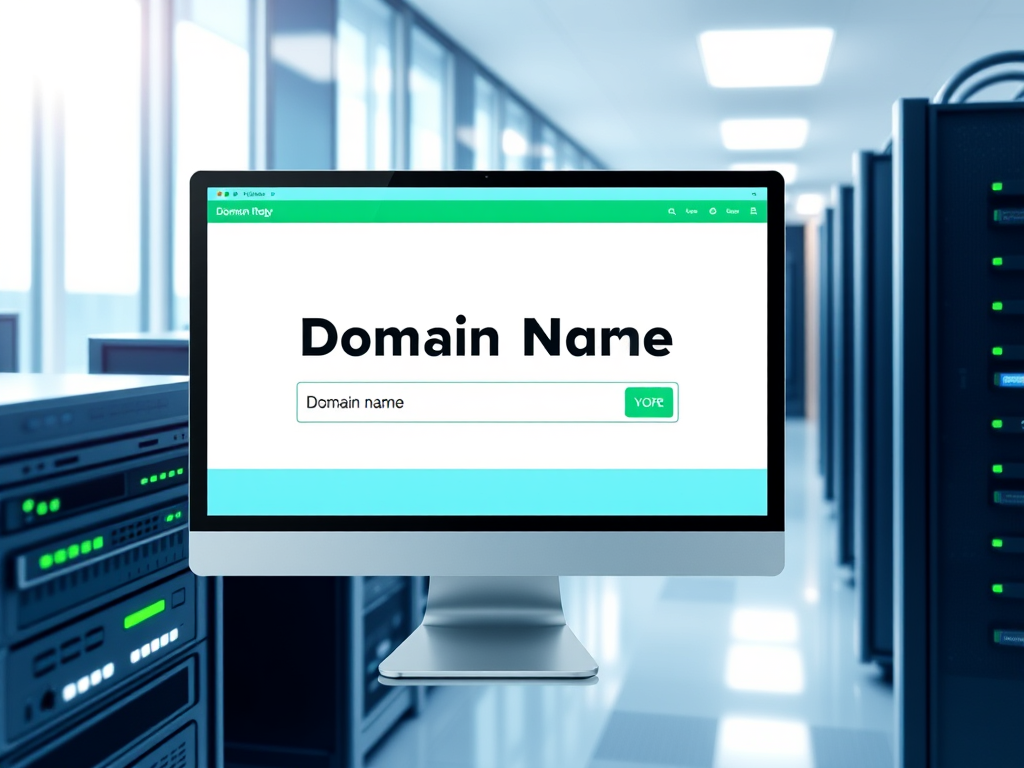Choosing the Right Blogging Niche for Beginners
So, you’ve decided to start a blog. First of all, welcome to the blogging world! Now comes the tricky part—choosing your niche. Picking the right topic for your blog is like choosing a pair of shoes; it needs to fit you perfectly, be something you’re comfortable with, and hopefully, look good while you’re rocking it. Don’t worry if you’re unsure where to start. That’s what we’re here for! Let’s dive into how to find the perfect blogging niche, step by step.
1. Start with Your Passions and Interests
Ever heard the phrase, “Do what you love, and you’ll never work a day in your life”? That applies to blogging too. If you’re going to pour hours into writing, researching, and creating content, it should be about something you genuinely enjoy. Think about your hobbies, interests, or even the things that get you talking nonstop at parties. Are you a food lover who’s always hunting for the next great recipe? Maybe you’re into fitness and can’t stop raving about the benefits of yoga. Whatever it is, jot down your ideas—it’s brainstorming time!
Starting with your passions also helps your blog stand out. Your excitement will shine through your writing, making it more engaging for readers. Plus, let’s be honest, blogging about something you love is just way more fun than forcing yourself to write about, say, corporate tax laws (unless that’s your thing—then go for it!).
2. Research the Market and Check the Competition

Okay, so you’ve got your list of passions—great start! Now it’s time to see if your potential niche has an audience. You don’t need millions of readers to succeed, but you do need people who care about your topic. Hop onto Google, Pinterest, or even TikTok, and type in your niche idea. What comes up? Are there tons of blogs already covering it, or is it more like a deserted island?
If you find an existing crowd, don’t panic. Competition isn’t a bad thing; it means people are interested in that topic! The trick is figuring out what makes you different. Maybe you’re a vegan foodie who specializes in budget-friendly recipes, or you’re a travel enthusiast with a focus on off-the-beaten-path destinations. Find your unique angle—it’s your secret sauce.
And if there’s little to no content in your chosen niche, that might be a red flag. It’s worth digging deeper to see if there’s genuine interest or if you’re just ahead of your time (hey, trendsetters exist too!).
3. Balance Passion with Profit Potential

Here’s where we get a bit practical. While blogging is a creative outlet, it’s also worth thinking about how you can monetize your efforts. Some niches are naturally more profitable than others. For example, topics like personal finance, health and wellness, and tech reviews often have high earning potential because they attract ads, affiliate links, and sponsored posts.
But don’t get caught up chasing dollar signs alone. Writing about something just because it’s profitable can lead to burnout pretty quickly. Instead, aim for a sweet spot between what you love and what people are willing to pay for. For instance, if you’re passionate about knitting, you could explore ways to monetize your blog through pattern sales or affiliate links for yarn and supplies.
A quick tip: Look at blogs in your niche to see how they’re making money. It’s not about copying but understanding the possibilities for your chosen topic.
4. Test Your Idea Before Committing Fully

Still unsure about your niche? Don’t stress. You can always test the waters before diving in. Start by writing a few posts on different topics and see what resonates with you—and your audience. Pay attention to what feels most enjoyable to write and which posts get the best reactions.
You can also ask friends, family, or online communities for feedback. Their input might reveal insights you hadn’t considered, like a hidden strength or a niche you didn’t realize you’d be great at.
Remember, choosing a niche isn’t about locking yourself into one topic forever. Blogs evolve, and so do interests. The key is to start somewhere and adjust as you go.
Essential Tools Every New Blogger Needs
Starting a blog is one of the most exciting ventures you can undertake, but it can also feel overwhelming. The good news is that with the right tools, the entire blogging process becomes smoother and more enjoyable. As a new blogger, having the right set of tools can not only save you time but also help you create high-quality content that attracts readers. Let’s dive into the essential tools every new blogger should consider for a successful start.
1. Domain Name and Web Hosting: Your Blog’s Foundation

One of the first things you’ll need as a new blogger is a domain name. This is your blog’s address on the internet, and choosing the right one is crucial. A good domain name should be short, memorable, and easy to spell. It’s also a good idea to pick a domain that reflects your niche or your personal brand.
Once you’ve picked a domain name, you’ll need to find a web host to store your blog online. Hosting is like renting a space on the internet for your blog. As a beginner, look for a hosting provider that offers great customer support and is reliable. We recommend Hostinger because it’s affordable and user-friendly, making it perfect for beginners. Plus, many hosting companies, including Hostinger, offer free domain registration for the first year, which is a bonus!
2. WordPress: The Ultimate Blogging Platform

Now that you have your domain and hosting set up, you’ll need a platform to create your blog. WordPress is the most popular choice for bloggers, and for a good reason. It’s incredibly flexible, easy to use, and has a massive library of themes and plugins. You can easily set up a blog on WordPress, even if you have no coding experience. The best part? It’s free to use.
WordPress allows you to customize your blog’s appearance with themes, which are pre-designed templates that give your blog its unique look. There are thousands of free and premium themes available. If you want a highly customizable theme, consider Divi or GeneratePress—both are fantastic for beginners and provide plenty of room for growth.
3. SEO Tools: Get Your Blog Noticed
One of the most important things new bloggers often overlook is SEO (Search Engine Optimization). SEO is the process of optimizing your blog so that search engines like Google can find it. Without proper SEO, your blog may never get the traffic it deserves.
To get started with SEO, you’ll need a plugin to help you optimize your posts. Rank Math is a popular choice for WordPress bloggers. It’s easy to set up and helps you optimize each post for keywords, meta descriptions, and more. This plugin makes SEO less intimidating, so you can focus on creating great content.
But SEO isn’t just about using the right plugin. You’ll also need to conduct keyword research to find topics that people are searching for. For this, tools like Google Keyword Planner and Ubersuggest are great. They help you find keywords with high search volume and low competition, making it easier to rank higher in search results.
4. Content Creation Tools: Write, Edit, and Design Like a Pro
Creating high-quality content is the backbone of any successful blog. But as a beginner, you may struggle with writing or designing your blog posts. Thankfully, there are a few tools to help make content creation easier.
For writing, Grammarly is an absolute must. This tool checks your grammar, spelling, and punctuation as you type, making it easier to create polished posts. It also provides suggestions for improving your writing style and readability. This is especially helpful for beginners who are still getting the hang of blogging.
If you plan on creating visually appealing posts with images or infographics, consider using Canva. Canva is a simple design tool that allows you to create stunning images, social media posts, and blog graphics, even if you have no design experience. You can easily drag and drop elements to create eye-catching visuals that will make your posts stand out.
5. Email Marketing Tools: Build and Engage Your Audience
As you grow your blog, one of the most important things you can do is build an email list. Email marketing is one of the most effective ways to connect with your readers and promote your blog. To get started, you’ll need an email marketing tool.
Mailchimp and ConvertKit are both excellent options for beginners. These tools allow you to collect email addresses, send newsletters, and even automate your email sequences. Having an email list means you can directly reach your readers with new content, promotions, or updates, ensuring that they keep coming back for more.
6. Analytics: Track Your Progress
To ensure your blog is growing and performing well, it’s essential to track its performance. Google Analytics is the go-to tool for tracking website traffic and understanding your audience. With Google Analytics, you can see how many people are visiting your blog, where they’re coming from, and what posts are the most popular.
By regularly checking your analytics, you can identify what’s working and what isn’t. For example, if a certain blog post is getting lots of traffic, you might want to write more posts on similar topics. Analytics help you make informed decisions and keep improving your blog over time.
7. Social Media Tools: Grow Your Blog’s Reach
As a new blogger, one of the best ways to drive traffic to your blog is by promoting your content on social media. But managing social media can be time-consuming. That’s where Buffer and Hootsuite come in. These tools allow you to schedule your social media posts in advance, so you don’t have to worry about posting in real-time. This can save you hours every week and help you stay consistent on platforms like Facebook, Twitter, and Instagram.
Tailwind is another great tool if you plan on using Pinterest to drive traffic. It helps schedule and optimize your pins for maximum reach and engagement.
Common Mistakes to Avoid When Starting Out as a Blogger
Starting a blog can be incredibly exciting, but it also comes with its fair share of challenges. As a beginner, it’s easy to make mistakes that could derail your journey. Whether you’re trying to build your blog into a profitable business or just aiming to share your thoughts with the world, there are a few common pitfalls you should avoid. Let’s dive into some of the key mistakes new bloggers often make and how you can steer clear of them!
1. Failing to Choose a Profitable Niche
One of the first mistakes many new bloggers make is choosing a niche that’s either too broad or too competitive. When you’re starting out, it’s essential to pick a niche that isn’t just something you’re passionate about but also something that has potential for profitability. A broad niche like “fitness” can be overwhelming due to the sheer number of competitors, making it hard to stand out. Instead, try narrowing your focus to something more specific, like “home workout routines for busy moms.” This allows you to target a specific audience and build authority in that area.
Choosing a profitable niche is crucial because it sets the foundation for the entire blog. Take the time to research potential niches and ensure there’s demand for the content you plan to create. Think about what people are struggling with, what questions they have, and how you can provide solutions. If you’re unsure, it’s always a good idea to focus on topics that align with both your interests and what people are willing to spend money on.
2. Neglecting SEO and Analytics
When you’re just starting out, it’s tempting to focus solely on content creation and forget about the behind-the-scenes work that drives traffic to your blog. SEO (Search Engine Optimization) is a critical aspect of blogging success that too many beginners overlook. Without SEO, your content might not rank in search engines, and as a result, your blog could go unnoticed. By optimizing your blog posts with relevant keywords, adding proper meta descriptions, and using SEO-friendly titles, you can improve your chances of ranking higher on Google.
Additionally, don’t forget about analytics. Tools like Google Analytics are your best friend when it comes to understanding how your audience interacts with your content. These insights will help you figure out what’s working, what’s not, and where you need to improve. Keep track of your traffic and see which topics are performing well so you can refine your content strategy moving forward.
3. Ignoring Website Design and User Experience
A common mistake among new bloggers is neglecting their website’s design and user experience. While content is king, the way your blog looks and functions plays a significant role in whether visitors stick around or bounce after a few seconds. You don’t need to spend thousands on a custom design, but you should aim for a clean, professional look that’s easy to navigate.
Ensure your blog has a simple layout, with clear categories and an intuitive menu. Don’t clutter your homepage with excessive ads or pop-ups that distract from your content. Also, make sure your blog is mobile-friendly—more people browse the web on their phones than ever before, and if your site isn’t optimized for mobile devices, you’ll likely lose out on a lot of potential readers.
4. Publishing Too Little Content
Another common mistake is not posting enough content to keep your readers engaged. When you first launch your blog, it can be tempting to publish just one or two posts and call it a day. However, that won’t give your audience much to explore or engage with. It’s crucial to have a solid content plan in place and consistently add new posts. At a minimum, aim for at least five to ten blog posts before you officially launch.
Your content should provide value to your audience, answering their questions and offering practical solutions to their problems. Focus on creating comprehensive, in-depth posts that establish you as an authority in your niche. The more high-quality content you publish, the more likely your blog is to attract organic traffic.
5. Not Having a Monetization Strategy
While many new bloggers start their sites simply because they’re passionate about a topic, you’ll eventually want to turn your blog into a money-making venture. One of the biggest mistakes is not having a monetization strategy from the beginning. If you don’t know how you’ll make money from your blog, you might struggle to maintain motivation and may not prioritize the right actions.
There are several ways to monetize your blog, including affiliate marketing, selling digital products like eBooks or online courses, and offering consulting services. It’s important to decide on a strategy early on so you can create content that aligns with your goals. For example, if you plan to make money through affiliate marketing, you’ll need to write product reviews or create comparison posts that encourage visitors to click on your affiliate links.
6. Overlooking Website Speed and Performance
A slow website is a surefire way to lose visitors, especially when they are browsing on mobile devices. If your blog takes too long to load, potential readers will likely bounce before they even see your content. Many new bloggers overlook website performance, focusing instead on writing posts or customizing themes.
To avoid this mistake, choose a fast, reliable web hosting service and optimize your website’s speed. You can use tools like Google PageSpeed Insights to test your website’s performance and identify areas for improvement. Compressing images, using a content delivery network (CDN), and minimizing unnecessary plugins can also improve your site’s loading speed.
Setting Realistic Goals for Your Blogging Journey
Starting a blog can be an exciting and rewarding journey, but it’s easy to get carried away with lofty expectations. Whether you’re aiming to create a personal blog or build a profitable online business, setting realistic goals is essential to your long-term success. In this post, I’ll guide you through the importance of realistic goal setting for your blog, why it matters, and how to break your journey into manageable milestones.
Why Realistic Goals Matter for Bloggers
When you first start blogging, it’s tempting to dream big — like making six figures within a year. However, the road to blogging success is paved with a lot of learning, trial and error, and most importantly, patience. Setting realistic goals helps you stay grounded while navigating this journey.
Having clear, achievable goals prevents overwhelm and burnout. It allows you to celebrate small wins along the way, which motivates you to keep going, even when the results seem far off. Plus, realistic goals provide a roadmap for where you want to go and keep you focused on the tasks that matter most.
Breaking Down Your Blogging Goals into Manageable Steps
Blogging is a marathon, not a sprint, so it’s important to break down your larger goals into smaller, actionable steps. For example, if your big goal is to generate a steady income from your blog, you’ll need to set smaller milestones, such as:
- Building an Engaged Audience: Before you can monetize your blog, you need readers. Focus on creating valuable, consistent content that speaks to your audience’s needs. Aim to grow your email list or social media following with each passing month.
- SEO and Traffic Growth: SEO (search engine optimization) is one of the key drivers of blog traffic. Set goals for improving your blog’s SEO, such as optimizing existing content, doing keyword research, or building backlinks. You’ll want to track the gradual increase in organic traffic to measure your SEO success.
- Monetization: Don’t rush into monetizing your blog too early. In the beginning, concentrate on creating high-quality content and building a loyal audience. Afterward, start thinking about monetization through affiliate marketing, sponsored posts, or selling your products and services. Set goals like “earn my first $100 from affiliate marketing” or “publish my first eBook by the end of the year.”
By setting smaller, achievable milestones, you give yourself something to celebrate every few weeks or months. These wins will keep you motivated and help you see the progress you’re making toward your larger goals.
Focusing on Consistency Over Perfection
One of the most common traps new bloggers fall into is chasing perfection. It’s tempting to spend hours crafting the perfect post or waiting until your blog design is flawless before launching. However, the key to success in blogging is consistency, not perfection. Set a goal to post regularly — whether that’s once a week or a couple of times a month — and focus on improving as you go.
You don’t need to have a perfect blog design, the best content, or the most popular niche from the start. The key is to consistently provide value to your readers and improve over time. As your blog grows, you’ll naturally refine your skills and adjust your approach. But the important part is to start, and then keep going.
Be Realistic About Time and Resources
Another aspect of goal setting that can’t be overlooked is how much time and resources you’re able to commit to your blog. Are you blogging full-time, or do you have a day job? Understanding how much time you can realistically dedicate to blogging will help you set achievable goals. If you can only dedicate a couple of hours per week, set goals that align with that schedule. For example, you might aim to publish one blog post every two weeks or focus on social media engagement once a week.
Moreover, consider your skill level when setting goals. If you’re new to blogging, it’s okay to take your time with technical aspects like setting up your site, learning SEO, or writing long-form blog posts. Don’t set yourself up for frustration by trying to do everything all at once.
Tracking and Adjusting Your Goals Over Time
As you progress in your blogging journey, you’ll likely need to reassess your goals and adjust them based on your growth. Maybe you’re getting more traffic than expected and want to set more ambitious targets, or perhaps things are moving slower than anticipated, and you need to recalibrate. Don’t be afraid to modify your goals as you go. The flexibility to adjust is part of the process.
Set a goal to regularly review your progress. This could be monthly, quarterly, or even annually, depending on your preference. Analyze what’s working well and what could be improved, and adjust your strategy accordingly. This proactive approach will help you stay focused and motivated to achieve your ultimate blogging goals.

